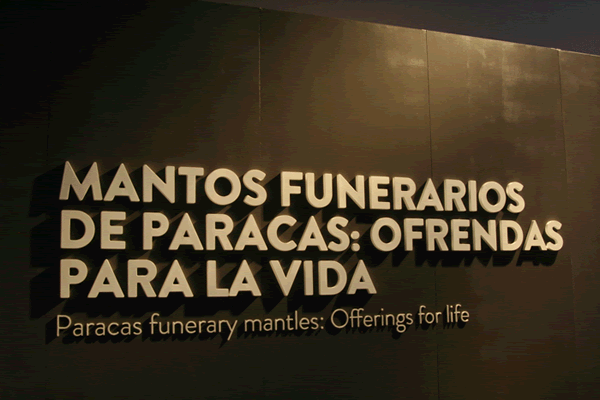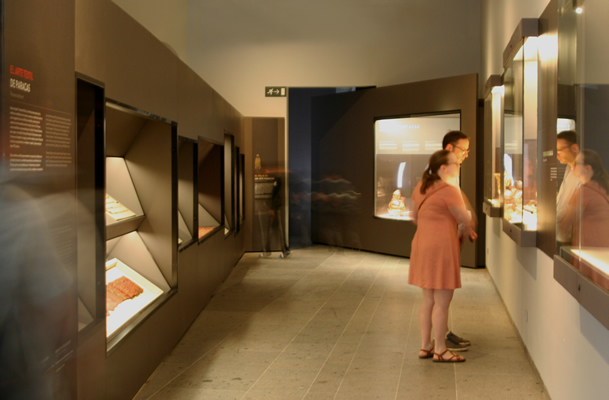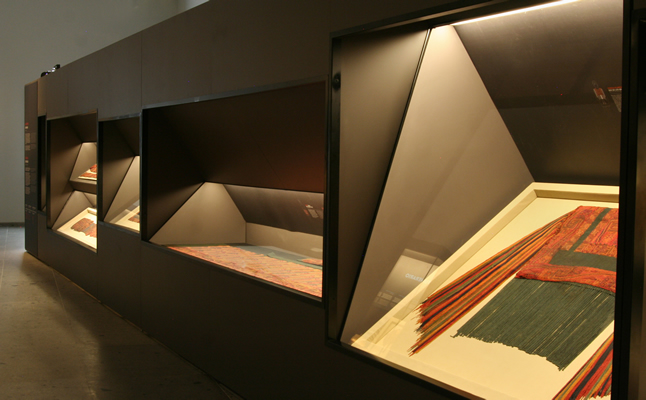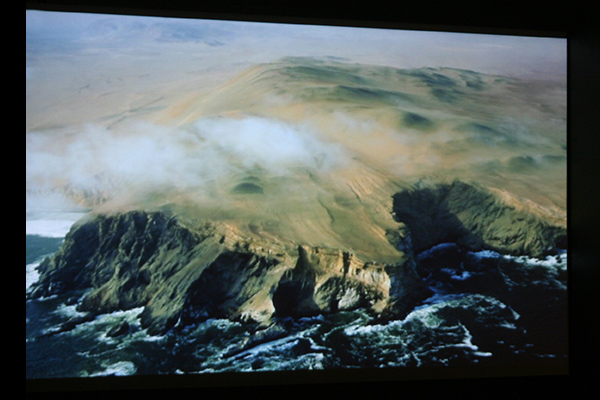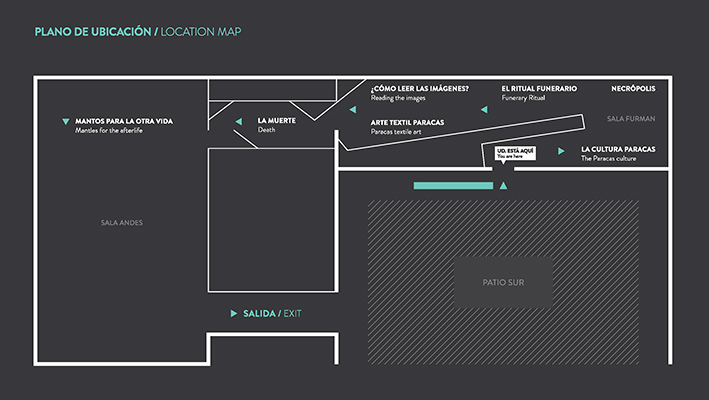Paracas Funerary Mantles: Offerings for Life – 2015
- Paracas funerary mantles: Offerings for Life
- Who Were The Paracas?
- The Wari Kayán Cemetery and Its discoverer
- What is a funerary bundle?
- Offerings for the Afterlife
- “Reading” the Images
- Severed heads, trophy heads
- Paracas textile art
- Three styles of embroidery
- A miniature outfit
- Headband: Turban I
- Headband: Turban II
- Headband: Turban III
- Turban-cloth: Two-headed serpents
- Skirt: Big-Eyed Being
- Uncu tunic with felines: Big-eyed Being
- Short poncho: Orcas
- Short poncho: Feline-Man
- Short poncho with fringes: Big-Eyed Being
- Attire of a Paracas chief
- Opening a funerary bundle from the Wari Kayán Necrópolis
- Mantles for the afterfile
- Bibliographic references
- Credits
Paracas funerary mantles: Offerings for Life
Since being discovered by archeologists almost a century ago, the embroidered textiles of Paracas have not ceased to amaze people around the world. Crafted in the south of Peru around the beginning of the Common Era, they lay forgotten under the sand for nearly two millennia. While in use, they served successive generations of fishing and farming peoples as symbols of identity and distinction, as a channel of communication with the gods, and as vital offerings in the tombs of the ancestors or forebears.
By observing these magnificent textiles, the grave goods that accompanied them, and the funerary bundles that contained them, you will embark on a journey into the past, to learn about the religious ideas and beliefs of this ancient society from Peru’s southern coast whose vision of life was to die in order to live again.




































